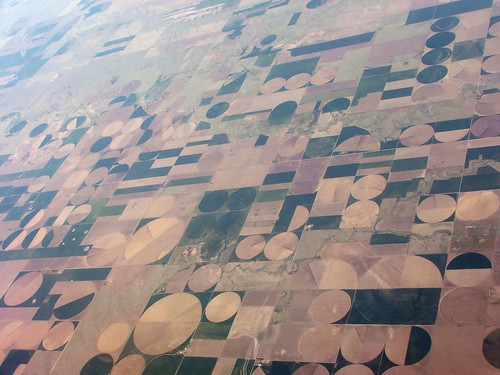Following on from three ideas to introduce locus, here are three ideas I used to help make the locus of the parabola come alive for my students. Regular readers of this blog will know how much I believe in the benefits of hands on exploration of mathematical objects - and these are very hands on!
The three ideas are:
The three ideas are:
- Use a MIRA mirror to construct a parabola. My senior students loved this activity- a chance to revert to back to childhood, while still being challenging.
- Use GeoGebra to construct a parabola given any arbitrary focus point and directrix. Try this with non-standard orientations.
- Be entranced by a wonderful 3D optical illusion toy that exploits the properties of the parabola.
1. Using a MIRA mirror (MIRA math tool) to construct a parabola
I'm extremely fortunate to have a box of these in my faculty storeroom:
 |
| Source: http://www.enasco.com/product/TB14953T |
While they look like tools for the junior math room (and they are wonderful to use in this context!), there's no reason our senior students should be locked out from using them! Here is a worksheet that give instructions on constructing a parabola with the MIRA mirror. It's a really fun activity - a chance for senior students to play a little - and a great opportunity to ask the "why" question - reinforcing the idea of locus and the locus definition of a parabola.
Locus and Parabola MIRA Parabola GHT0501
2. Constructing a parabola using GeoGebra.
Why do I need special help to construct a parabola in GeoGebra you may say? Of course GeoGebra can construct a parabola with zero effort. But this guide explores how to construct a parabola using the locus approach.
 |
| Can you find the parabola given any arbitrary focus point F and directrix AB? |
Locus and Parabola Make a Parabola GHT0301
3. Discover something special about the parabola
A terrific toy worthy of being in your mathematics (and science) classroom is the Optigone Mirage®.
 |
| The Optigone
Mirage® is a pair of twin parabolic mirrors, arranged to project a 3D image floating above the top of the kit. In this image from a paper by Christian Ucke, the pig is actually inside the mirrors. |
As always, encourage students to play with the toy (not that they will need encouragement - my students had their smartphones out takings photographs within seconds!), then ask the Why? question. Even though I purchased* one of these for my senior mathematics class, students across all my classes were entranced by it - and it gave me great pleasure to say to the juniors "you will learn how it works in your maths and science classes in a few years".
* Sadly I could not find a convenient way to purchase one of these in Australia - so I ended up buying a clone from Australian Geographic.






